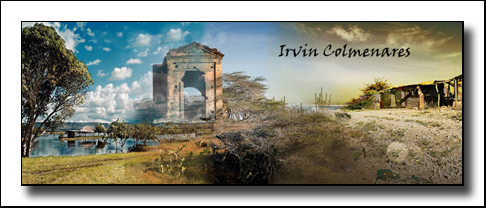Mi banda sonora. Levántame Catirita | My soundtrack. Build Me Up Buttercup

Siempre le he agradecido a mi madre su empeño por educarnos. Aunque apenas pudo llegar al sexto grado, ella quiso para sus hijos algo distinto y pensaba que si estudiábamos no solo podríamos tener un mejor nivel de vida sino, además, ser mejores personas.
Ella tenía muy clara la importancia del estudio. Su primera prioridad era que fuésemos a la escuela. Si había que sacrificar algún paseo se sacrificaba, si no había estreno de navidad pues no se tenía, incluso si en algún caso extremo habría que hacer recortes en el presupuesto del mercado, se hacía. Todo con tal de que no faltáramos ni un día a clases.
Como yo era el mayor había partido primero en lo relacionado con el estudio, eso a sus ojos me daba ciertas prioridades. Tenía la ventaja de que los más pequeños no iban a la escuela, así que ella buscaba la manera de motivarme.
Para el año sesenta y ocho había salido bien en el liceo y mi madre me ofreció algún regalo que quisiera.
Ya para ese momento me había aficionado con la música, sobre todo con el Rock y el pop que escuchaba por la radio. A falta de equipos de sonidos en mi casa mi única posibilidad de escuchar música era con un pequeño radio transistor, al que le ponía un audífono para no molestar a los demás.

Por ese entonces habían comenzado a salir algunos equipos de cassettes, eso era una maravilla, se podía almacenar hasta una hora de música, lo que era muchísimo para la época.
Le comenté a mi madre y le pedí de regalo el equipo de cassette portátil, eran un poco caros porque todavía no se habían popularizado. Quién sabe cuánto tiempo tuvo que ahorrar mi madre para comprarlo.
Recuerdo que me lo dio el día de mi cumpleaños y mi decepción fue muy grande. En vez de un equipo de cassette a mi madre le habían vendido un pequeño reproductor de cinta, de esos que tenían dos carretes.
El problema con ese era que apenas le cabía una canción corta, de menos de cuatro minutos. Además, como no tenía radio incorporado no se podía grabar algún audio que estuviera sonando en el equipo, por eso traía un pequeño micrófono. En verdad que aquel aparato casi no servía para nada.
Pero bueno, no lo iba a botar. Trate de poner buena cara, improvisé una expresión de alegría y le di las gracias a mi madre por haberme dado ese regalo tan lindo.
En aquel momento una de las canciones que más sonaba en la radio era Build Me Up Buttercup, en nuestro país por comodidad le dieron el título de “Levántame Catirita”, del grupo británico The foundations. Yo pensaba que era un grupo de USA, mi ignorancia era muy grande y todo lo que era ingles yo lo asociaba con los Estados Unidos.
Desde que oí la canción me gustó mucho, el arreglo musical y las voces fueron suficiente para llamar mi atención. Decidí entonces que esa sería la primera canción que grabaría en mi reproductor de carretes.
Una tarde fui donde un amigo que tenía un radio mejor que el mío, estuvimos algún rato esperando que radiaran la canción completa. porque algunos locutores tenían la costumbre de comentar encima de lo que estaba sonando alguna información relacionado con los temas. Pero la canción era tan popular que la repetían a cada momento, así que no tuvimos que esperar mucho para grabarla.
Aquel tema lo debí escuchar cientos de veces en un ritual que parecía el de un monje Zen. Cada vez había que enhebrar la cinta en el cabezal del reproductor, con mucho cuidado para que no se doblara o se fuese a romper. Luego se le daban varias vueltas de manera manual para que ajustara, y al final era que se podía escuchar. En comparación con los estándares de hoy aquel sonido era terrible. Sin embargo, aquellos tres minutos que duraba la canción me daban una alegría infinita. Poder escucharla cada vez que me provocara era realmente grandioso.
Pasarían muchos años hasta que pude conocer algunos datos de la canción. Lo primero a decir es que The Foundations fue uno de los primeros grupos británicos que tuvo un componente interracial.
Esos años sesenta eran tiempos de gran discriminación racial en países como USA y el Reino Unido. Así que ver en la televisión de aquellos países un grupo de blancos y negros juntos, tocando, cantando, y pasándola bien era algo muy poco usual.
En cambio para nosotros era completamente normal ver esas combinaciones. En nuestro país no se conocían discriminaciones de ese tipo. Todos los niños, independiente de su raza o credo, íbamos a la misma escuela, comíamos en los mismos sitios, comprábamos en los mismos mercados. Compartir con el “Otro” siempre fue lo natural para nosotros.
Atreverse a romper con los prejuicios no es cualquier cosa y por eso la gente de The Foundation se ganaron su lugar en la historia al estar entre los pioneros que hicieron valer el derecho a estar juntos, independientemente del color de la piel.
Es triste y lamentable ver cómo en estos años del siglo veintiuno el racismo ha tenido un resurgimiento, no solo en USA sino también en muchos países de Europa.
Otro dato que conseguí en internet y que me llamó la atención fue el origen de los integrantes del grupo. El trombonista Eric Allandale, es de la isla Dominica, Mike Elliot, el saxofonista, de la isla de Jamaica, y Clem Curtis, el cantante, de la isla de Trinidad.
Recordemos que en los tiempos coloniales todas esa islas estuvieron controladas por los ingleses. Y aunque hoy día son naciones soberanas, la instauración de la Commonwealth ha favorecido la continuidad de esos lazos históricos. Esto ha permitido que gente como las familias de esos músicos hayan emigrado a Inglaterra. He allí la explicación de su presencia en la banda británica.
Quizá esa vibra caribeña es la que me conecto con la canción en los tiempos de mi adolescencia.
Es muy probable que este tema lo hayan escuchado alguna vez. Si no, los invito a escuchar esta balada que nos habla del desamor.
Gracias por tu tiempo.


I have always been grateful to my mother for her determination to educate us. Although she barely made it to sixth grade, she wanted something different for her children and believed that if we studied, we would not only have a better standard of living but also be better people.
She was very clear about the importance of studying. Her first priority was for us to go to school. If it meant sacrificing an outing, so be it; if it meant no Christmas presents, so be it; even if it meant cutting back on the grocery budget in extreme cases, so be it. Anything to ensure that we didn't miss a single day of school.
As I was the oldest, I had to study first, which in her eyes gave me certain priorities. I had the advantage that the younger ones did not go to school, so she looked for ways to motivate me.
By 1968, I had done well in high school, and my mother offered to buy me any gift I wanted.
By that time, I had become fond of music, especially the rock and pop I heard on the radio. Since we didn't have a stereo at home, my only chance to listen to music was with a small transistor radio, which I listened to with headphones so as not to disturb the others.

At that time, some cassette players had begun to appear on the market, which was wonderful because you could store up to an hour of music, which was a lot for that time.
I told my mother about it and asked her for a portable cassette player as a gift. They were a bit expensive because they had not yet become popular. Who knows how long my mother had to save to buy it.
I remember she gave it to me on my birthday, and I was very disappointed. Instead of a cassette player, my mother had been sold a small tape player, one of those with two reels.
The problem with that one was that it could barely hold one short song, less than four minutes long. Furthermore, as it did not have a built-in radio, it was not possible to record any audio that was playing on the device, which is why it came with a small microphone. In truth, that device was almost useless.
But anyway, I wasn't going to throw it away. I tried to put on a brave face, improvised a happy expression, and thanked my mother for giving me such a nice gift.
At that time, one of the songs that was most played on the radio was Build Me Up Buttercup, which in our country was given the title “Levántame Catirita” for convenience, by the British group The Foundations. I thought they were a group from the US; my ignorance was great, and I associated everything English with the United States.
From the moment I heard the song, I loved it. The musical arrangement and vocals were enough to catch my attention. I decided then that it would be the first song I would record on my reel-to-reel tape recorder.
One afternoon, I went to a friend's house who had a better radio than mine, and we waited for a while for them to play the whole song, because some announcers had a habit of commenting on the songs they were playing. But the song was so popular that they played it over and over again, so we didn't have to wait long.
I must have listened to that song hundreds of times in a ritual that resembled that of a Zen monk. Each time, I had to thread the tape into the tape deck, being very careful not to bend or break it. Then I had to manually wind it several times to adjust it, and finally I could listen to it. Compared to today's standards, the sound quality was terrible. However, those three minutes that the song lasted gave me infinite joy. Being able to listen to it whenever I wanted was really great.
It would be many years before I learned some facts about the song. The first thing to say is that The Foundations was one of the first British groups to have an interracial member.
The 1960s were times of great racial discrimination in countries such as the US and the UK. So seeing a group of black and white people together on television in those countries, playing, singing, and having a good time was very unusual.
For us, however, it was completely normal to see such combinations. In our country, there was no discrimination of that kind. All children, regardless of race or creed, went to the same school, ate in the same places, and shopped in the same markets. Sharing with the “Other” was always natural for us.
Daring to break with prejudice is no small feat, and that is why the people of The Foundation earned their place in history by being among the pioneers who asserted the right to be together, regardless of skin color.
It is sad and regrettable to see how racism has resurfaced in the 21st century, not only in the US but also in many European countries.
Another fact I found on the internet that caught my attention was the origin of the group's members. Trombonist Eric Allandale is from the island of Dominica, saxophonist Mike Elliot is from the island of Jamaica, and singer Clem Curtis is from the island of Trinidad.
Let's remember that in colonial times, all of these islands were controlled by the British. And although today they are sovereign nations, the establishment of the Commonwealth has favored the continuity of these historical ties. This has allowed people like the families of these musicians to emigrate to England. That explains their presence in the British band.
Perhaps it is that Caribbean vibe that connects me to the song from my teenage years.
It is very likely that you have heard this song before. If not, I invite you to listen to this ballad about heartbreak.
Thank you for your time.
Translated with DeepL.com (free version).








Comunidad Be Entrepreneur

I really love this Buttercup song, a song that I love from the 90's up to now.
I like it a lot too. Every time I hear it, it brings back memories. Thank you for stopping by and commenting, dear @ronimarie82 . A big hug from Maracay.
Excelente historia @irvinc y la canción siempre me ha gustado, como dices fue muy sonada.
Me alegra que te haya gustado, es una canción muy buena. Gracias por pasar y comentar estimada @damarysvibra. Un fuerte abrazo desde Maracay.
Saludos amigo
Me pareció interesante tu publicación.
Este tema está en mi lista del Spotify. Por alguna razón al escucharla, se despierta un sentimiento de alegría. Mi mente viaja a los días de mi niñez por allá a finales de los años 70.
La música suele tener el poder de trasladarnos en el tiempo. También a través de la música se han logrado romper barreras y otras son bastante emblemáticas.
Tu reflexión me hizo pensar en los desafíos que pasamos como padres. A veces creemos que nos las estamos devorando y no es así. Creo que algo que puede ayudar es, conversar con los hijos descubrir cuales son sus reales gustos (no los que yo imagino) hablar libera, conecta, uno entiende mejor. Pero, a pesar de todo eso, estoy segura que nunca olvidarás el sacrificio que hizo tu mami por premiar tu esfuerzo en la escuela. Tu madre es un gran ejemplo de motivación.
Amigo disfruté tu publicación. Gracias por compartir ese recuerdo, reflexivo.